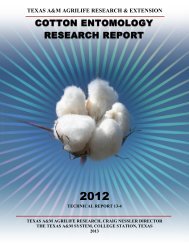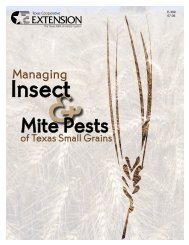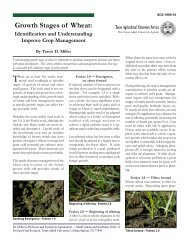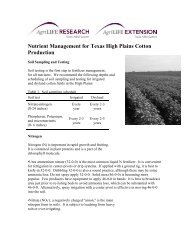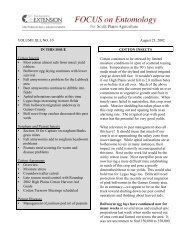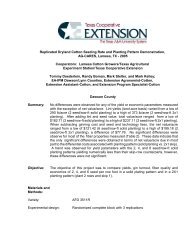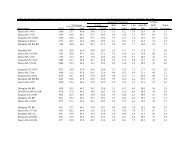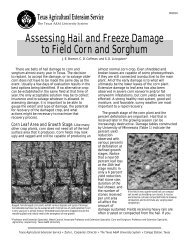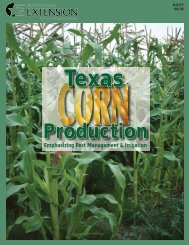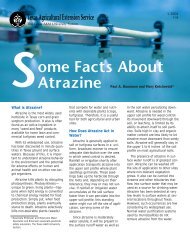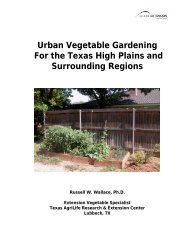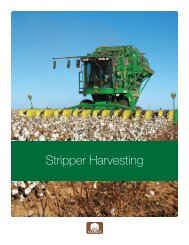Systems Agronomic and Economic Evaluation of Cotton Varieties in ...
Systems Agronomic and Economic Evaluation of Cotton Varieties in ...
Systems Agronomic and Economic Evaluation of Cotton Varieties in ...
You also want an ePaper? Increase the reach of your titles
YUMPU automatically turns print PDFs into web optimized ePapers that Google loves.
Scenario 3:A university-style small-block replicated trial compar<strong>in</strong>g the same 10 varieties.What can you learn:Data from such trials, if they are designed well <strong>and</strong> carried out precisely, generallyare reliable. That is, the results generally determ<strong>in</strong>e the yield potential <strong>of</strong> cropvarieties. However, it is still important to consider whether results are applicable toyour farm<strong>in</strong>g operation <strong>and</strong> are consistent with other research.How do I know whether differences <strong>in</strong> yield, for example, are real <strong>and</strong> not caused byfield variability or sloppy research?Scientists use statistical analysis to help determ<strong>in</strong>e whether differences are real or are theresult <strong>of</strong> experimental error, such as field variation.The two most commonly used statistics are Least Significant Difference (LSD) <strong>and</strong> theCoefficient <strong>of</strong> Variation (CV), both <strong>of</strong> which can provide <strong>in</strong>sight on the validity <strong>of</strong> trial data.If these values aren’t provided with trial results, ask for them.Least Significant Difference (LSD) is the m<strong>in</strong>imum amount that two varieties must differ tobe considered significantly different. Consider a trial where the LSD for yield is four bushelsper acre. If one variety yields 45 bushels per acre <strong>and</strong> another yields 43 bushels per acre,the two are not statistically different <strong>in</strong> yield. The difference <strong>in</strong> their yields is due to normalfield variation, not to their genetics. In this example, a variety that yields 45 bushels peracre is significantly better than those yield<strong>in</strong>g less than 41 bushels per acre. In manyresearch trials, LSDs are calculated at confidence level <strong>of</strong> 75 to 95 percent. For example,a confidence level <strong>of</strong> 95 percent means you can be 95 percent certa<strong>in</strong> that yield differencesgreater than the LSD amount are due to genetics <strong>and</strong> not to plot variability.Coefficient <strong>of</strong> Variation (CV) measures the relative amount <strong>of</strong> r<strong>and</strong>om experimentalvariability not accounted for <strong>in</strong> the design <strong>of</strong> a test. It is expressed as a percent <strong>of</strong> theoverall average <strong>of</strong> the test.For measur<strong>in</strong>g yield differences, CV’s <strong>of</strong> up to five percent are considered excellent; 5.1to 10 percent are considered good; <strong>and</strong> 10.1 to 15 percent are fair.A high CV means there must be larger differences among treatments to conclude thatsignificant differences exist. The bottom l<strong>in</strong>e: When consider<strong>in</strong>g yield test data, be skepticalwhen the CV exceeds 15 percent.160




